 W
WThe Kingdom of Mysore was a realm in southern India, traditionally believed to have been founded in 1399 in the vicinity of the modern city of Mysore. The kingdom, which was founded and ruled for most part by the Hindu Wodeyar family, initially served as a vassal state of the Vijayanagara Empire. The 17th century saw a steady expansion of its territory and during the rule of Narasaraja Wodeyar I and Chikka Devaraja Wodeyar, the kingdom annexed large expanses of what is now southern Karnataka and parts of Tamil Nadu to become a powerful state in the southern Deccan. During a brief Muslim rule, the kingdom shifted to a Sultanate style of administration. During this time Mysore experienced sustained growth in per capita income, structural change in the economy, increased pace of technological innovation, and reached the height of its economic and military power and dominion in the latter half of the 18th century under the de facto ruler Haider Ali and his son Tipu Sultan.
 W
WBandipur National Park established in 1974 as a tiger reserve under Project Tiger, is a national park located in the Indian state of Karnataka, which is the state with the second highest tiger population in India. Along with adjacent Nagarhole National Park it is one of the Premier Tiger Reserves in the country. It was once a private hunting reserve for the Maharaja of the Kingdom of Mysore but has now been upgraded to Bandipur Tiger Reserve. Bandipur is known for its wildlife and has many types of biomes, but dry deciduous forest is dominant.
 W
WBangalore Palace is a royal palace located in Bengaluru, Karnataka, India, in an area that was owned by Rev. J. Garrett, the first principal of the Central High School in Bangalore, now famous as Central College. The commencement of the construction of the palace is attributed to him.
 W
WCentral College Bangalore (1858) is one of the oldest colleges in India. This college was originally affiliated to University of Mysore part of Mysore State. In 1964, Central College was transferred to Bangalore University, a new university formed to meet the needs of the people of Bangalore. Initially, the two premier colleges of the city, the Central College (CC) and the University Visvesvaraya College of Engineering (UVCE) formed the nucleus of Bangalore University. Rev. J. Garrett was the first principal of the Central High School, afterwards renamed Central College.
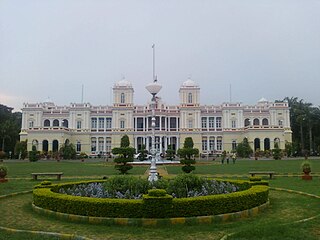 W
WCheluvamba Mansion is located in the city of Mysore, Karnataka. It was built by Maharaja Krishnaraja Wodeyar IV for the third princess of Mysore - Cheluvajammanni and it is similar to other mansions built by them which are spread over a large area surrounded by gardens. This mansion is crafted like other buildings of the Wadiyar dynasty.
 W
WChittaranjan Palace is a lesser-known palace at Mysore that was originally built for a princess of the Mysore royal family. It presently houses the "Green Hotel". It is a small hotel with 31 rooms and is eco-friendly. The profits from the hotel are given to charity.
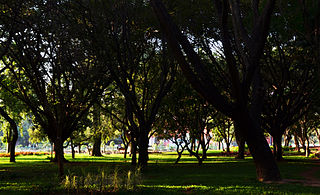 W
WCubbon Park, officially called Sri Chamarajendra Park is a landmark 'lung' area of Bengaluru city, located within the heart of the city in the Central Administrative Area. Originally created in 1870, when Major General Richard Sankey was the then British Chief Engineer of Mysore state, it covered an area of 100 acres (0.40 km2) and subsequent expansion has taken place and the area reported now is about 300 acres (1.2 km2). It has a rich recorded history of abundant flora and fauna plantations coupled with numerous impressive and aesthetically located buildings and statues of famous personages, in its precincts.
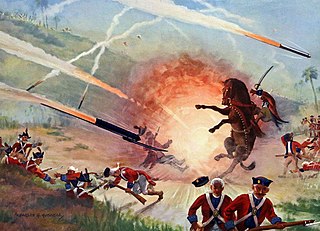 W
WFathul Mujahidin is a military manual that was written by Zainul Abedin Shustari at the instruction of Tipu Sultan, the ruler of the Kingdom of Mysore, considered a pioneer in the use of rocket artillery. Mysore started to equip their army with rockets in the 1750s and during the Second Anglo–Mysore War (1780–1784) Tipu and his father Haider Ali used this technology against British troops. Tipu Sultan used rockets in battle with the British Army in the 1792 Siege of Srirangapatna, a battle at the end of the Third Anglo-Mysore War.
 W
WThe Golden Throne or Chinnada Simhasana or Ratna Simhasana in Kannada, was the royal throne of the rulers of the Kingdom of Mysore. It is one of the main attraction of Mysore Palace. It is kept for public viewing only during Dasara festival and on the rest of the days, it is disassembled and kept in safe lockers of the palace.
 W
WThe Indian Institute of Science (IISc) is a public, deemed, research university for higher education and research in science, engineering, design, and management. It is located in Bangalore (Bengaluru), in the Indian state of Karnataka. The institute was established in 1909 with active support from Jamsetji Tata and thus is also locally known as the "Tata Institute". It was granted the deemed to be university status in 1958 and the Institute of Eminence status in 2018.
 W
WJaganmohan Palace is a palace in the city of Mysore, India. Its construction was completed in 1861 and was initially used by the Wodeyars, kings of Mysore as their home. It is now used as an art gallery and a function hall. The palace is one of the seven palaces of the royal city of Mysore.
 W
WJayalakshmi Vilas Mansion is a heritage building in Mysore.
 W
WJog Falls is a waterfall on the Sharavati river located in the Western Ghats in Sagara taluk, Shimoga district. It is the second highest plunge waterfall in India. It is a segmented waterfall which depends on rain and season becomes a plunge waterfall. The falls are major attractions for tourists and is ranked 13th in the world by the waterfall database.
 W
WKrishna Raja Sagara, also popularly known as KRS, is a lake and the dam that creates it. They are close to the settlement of Krishnarajasagara in the Indian State of Karnataka. The gravity dam made of surki mortar is below the confluence of river Kaveri with its tributaries Hemavati and Lakshmana Tirtha, in the district of Mandya.
 W
WLalbagh Botanical Garden, or shortened Lalbagh, is an old botanical garden in Bengaluru, India. First planned and laid out during the dalavaiship of Hyder Ali and later adorned with unique plant species by his son Tippu, it was later managed under numerous British Superintendents before Indian Independence. It was responsible for the introduction and propagation of numerous ornamental plants as well as those of economic value. It also served a social function as a park and recreational space, with a central glass house dating from 1890 which was used for flower shows. In modern times it hosts two flower shows coinciding with the week of Republic Day and Independence Day. As an urban green space along with Cubbon Park, it is also home to numerous wild species of birds and other wildlife. The garden also has a lake adjoining a large rock on which a watchtower had been constructed during the reign of Kempegowda II.
 W
WThe List of religious buildings and structures of the Kingdom of Mysore includes notable and historically important Hindu temples, royal palaces, churches, mosques, military fortification and other courtly structures that were built or received significant embellishment by the rulers of the Kingdom of Mysore. The term "Kingdom of Mysore" broadly covers the various stages the Mysore establishment went through: A Vijayanagara vassal, an independent Hindu Kingdom ruled by the Wodeyar dynasty, ruled by the de facto rulers Hyder Ali and Tipu Sultan who took control of the Kingdom, and a princely monarchy under the British Raj before the establishment became a part of an independent India.
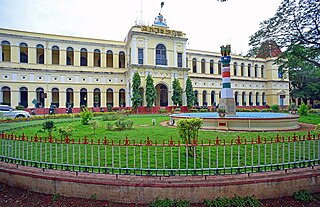 W
WMaharaja's College, Mysore (1889) is a college affiliated to Mysore University.
 W
WThe Mysore Palace is a historical palace and the royal residence at Mysore in the Indian State of Karnataka. It is the official residence of the Wadiyar dynasty and the seat of the Kingdom of Mysore. The palace is in the centre of Mysore, and faces the Chamundi Hills eastward. Mysore is commonly described as the 'City of Palaces', and there are seven palaces including this one; however, 'Mysore Palace' refers specifically to this one within the Old fort.
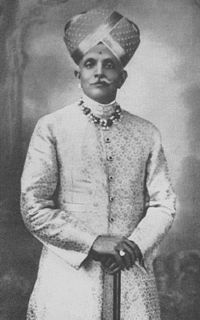 W
WThe Mysuru peta is the classical royal Indian attire worn by the erstwhile Kings of Mysuru, called the Wodeyars, of the Kingdom of Mysuru. Wodeyars wore a richly bejeweled turban made of silk and jari to match with colorful dresses as part of the royal dress.
 W
WFormerly known as the Oriental Library, the Oriental Research Institute (ORI) at Mysore, India, is a research institute which collects, exhibits, edits, and publishes rare manuscripts written in various scripts like Devanagari (Sanskrit), Brahmic (Kannada), Nandinagari (Sanskrit), Grantha, Malayalam, Tigalari, etc.
 W
WThe Kingdom of Mysore was a kingdom of southern India founded in 1399 by Yaduraya in the region of the modern city of Mysore. The Wodeyar dynasty, as the ruling family is known, ruled the southern Karnataka region until Indian independence in 1947, when the kingdom was merged with the Union of India.
 W
WGarrison Cemetery is located in Seringapatam, on the banks of the river Cauvery, about 300m from the Bangalore Mysore Highway. It has about 307 graves of the European officers killed in the final assault on Tippu Sultan in 1799, and their family members. Among the graves, there are 80 graves of the officers of the Swiss ‘de Meuron Regiment’, and the rest of the graves are their family members.
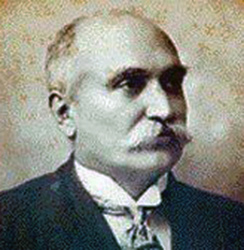 W
WBenjamin Lewis Rice, popularly known as B. L. Rice, was a British historian, archaeologist and educationist. He is known for his pioneering work in deciphering inscriptions, especially in Kannada, and in Sanskrit inscriptions in the Kingdom of Mysore. Rice's researches were published as the voluminous Epigraphia Carnatica which contains translations of about 9000 inscriptions he found in the Old Mysore area. Rice also compiled the much acclaimed Mysore Gazetteer which still remains the primary source of information for most places in Mysore and neighbouring Coorg. Rice served with distinction in the Mysore civil service and as first Director of the Mysore State Archaeology Department.
 W
WSarvādhikārī is a title with diverse uses in India, including:an old title for the Chief minister of a southern Indian ruler, notably of: under the Western Ganga Dynasty's Maharaja Dharma of Talakad, heading a cabinet which further included the Sandhivigrahi, the Dandanayaka, the Commander-in-Chief of the armed forces, Srikaranadhikari, Manemagatine or Manevergade and Hiriyabhandari ; sometimes, the Purohita too found a place in this Council of Ministers, advising in matters of religion the hereditary Chief Minister of Mysore; this was the office Tipu Sultan succeeded his father Hyder Ali and established a Muslim empire called Khudadad. superintendent, e.g. of a camp general manager of an enterprise
 W
WThe Scott's Bungalow is located in Seringapatam on the banks of the river Cauvery, at about half a mile from the Mysore Gate of the Seringapatam gate. The bungalow was the residence of Col. Scott, an officer of the Madras Army who took part in the Siege of Seringapatam in 1799. The bungalow is associated with the legend and tradegy of Col. Scott. The story of Scott's Bungalow is lamented in a poem by Walter Yeldham called The Deserted Bungalow, published in 1875.
 W
WSrirangapatna is a town of Mandya district in the Indian State of Karnataka. Located near the city of Mysore, it is of religious, cultural and historic importance.
 W
WThe Sritattvanidhi is a treatise written in the 19th century in Karnataka on the iconography and iconometry of divine figures in South India. One of its sections includes instructions for, and illustrations of, 122 hatha yoga postures.
 W
WThe University of Mysore is a public state university in Mysore, Karnataka, India. The university was founded during the reign of Krishnaraja Wodeyar IV, the Maharaja of Mysore. It opened on 27 July 1916. Its first chancellor was the Maharaja of Mysore; the first Vice-Chancellor was H. V. Nanjundaiah. The university became the first outside the British administration in India, the sixth in India as a whole, and the first in Karnataka. It is a state university of the affiliating type, and became autonomous on 3 March 1956, when it gained recognition from the University Grants Commission.
 W
WVani Vilasa Sagara, popularly known as Mari Kanive is a dam in Hiriyur Taluk, Chitradurga District, in the Indian state of Karnataka. It is located about 20 km south-westerly to Hiriyur, 32 km north-easterly to Hosadurga, 58 km south-easterly to Holalkere, 50 km northerly to Huliyar, 60 km southerly to Chitradurga, and 180 km north-westerly to Bangalore.